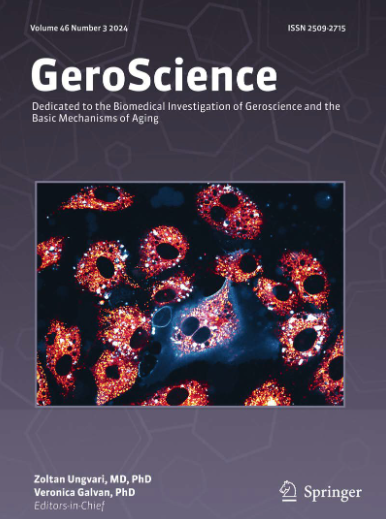Identifying novel modifiable risk factors for ischemic stroke through phenome-wide association study and Mendelian randomization analyses in a large-scale prospective cohort.
IF 5.4
2区 医学
Q1 GERIATRICS & GERONTOLOGY
引用次数: 0
Abstract
Despite extensive research, significant uncertainty remains regarding the associations between various risk factors and ischemic stroke (IS). This study aimed to systematically identify and validate a broad range of potential modifiable risk factors for IS. Utilizing genetic and phenotypic data from the UK Biobank (UKB; N = 418,236), we conducted a phenome-wide association study (PheWAS) and Cox regression analysis to identify modifiable factors across sociodemographics, physical measures, lifestyles, medical history, mental health, and biological assays associated with both polygenic risk scores for IS (IS-PRS) and incident IS. To assess potential causal relationships, two-sample Mendelian randomization (MR) analysis was further performed. Among the 1,023 modifiable factors examined, 145 were significantly associated with both IS-PRS and incident IS. Notably, better lung function and more computer use were associated with decreased IS risk, whereas more summer outdoor exposure, sleep-related factors, mental health factor, and facial ageing were linked to increased IS risk. The strongest association was observed for pneumonitis due to solids and liquids, with a hazard ratio (HR) and 95% confidence interval (CI) of 7.65 (7.06- 8.28). MR analysis provided further causal evidence supporting 31 of the identified risk factors and confirmed the casual associations of worse lung function, greater summer outdoor exposure and longer daytime napping with increased IS risk. The study comprehensively identified a wide range of novel modifiable risk factors for IS, including physical, lifestyle, and mental health indicators. These findings may contribute to the development of more targeted and effective prevention strategies for IS.在一项大规模前瞻性队列研究中,通过全现象关联研究和孟德尔随机化分析,确定缺血性卒中新的可改变危险因素。
尽管进行了广泛的研究,但各种危险因素与缺血性卒中(IS)之间的关系仍存在重大不确定性。本研究旨在系统地识别和验证IS的广泛潜在可改变的危险因素。利用英国生物银行(UKB; N = 418236)的遗传和表型数据,我们进行了一项全现象关联研究(PheWAS)和Cox回归分析,以确定与IS多基因风险评分(IS- prs)和事件IS相关的社会人口统计学、体格测量、生活方式、病史、心理健康和生物学分析中的可修改因素。为了评估潜在的因果关系,进一步进行了双样本孟德尔随机化(MR)分析。在1023个可改变的因素中,145个与IS- prs和事件IS显著相关。值得注意的是,更好的肺功能和更多的电脑使用与降低IS风险有关,而更多的夏季户外暴露、睡眠相关因素、心理健康因素和面部衰老与IS风险增加有关。固体和液体引起的肺炎的相关性最强,风险比(HR)和95%置信区间(CI)为7.65(7.06- 8.28)。磁共振分析提供了进一步的因果证据,支持31个已确定的风险因素,并证实肺功能恶化、夏季户外暴露时间延长和白天午睡时间延长与IS风险增加之间存在偶然关联。该研究全面确定了一系列新的可改变的IS风险因素,包括身体、生活方式和心理健康指标。这些发现可能有助于制定更有针对性和更有效的IS预防策略。
本文章由计算机程序翻译,如有差异,请以英文原文为准。
求助全文
约1分钟内获得全文
求助全文
来源期刊

GeroScience
Medicine-Complementary and Alternative Medicine
CiteScore
10.50
自引率
5.40%
发文量
182
期刊介绍:
GeroScience is a bi-monthly, international, peer-reviewed journal that publishes articles related to research in the biology of aging and research on biomedical applications that impact aging. The scope of articles to be considered include evolutionary biology, biophysics, genetics, genomics, proteomics, molecular biology, cell biology, biochemistry, endocrinology, immunology, physiology, pharmacology, neuroscience, and psychology.
 求助内容:
求助内容: 应助结果提醒方式:
应助结果提醒方式:


